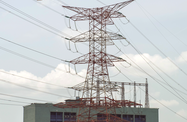The future of solar energy in Malaysia received a powerful boost on June 16 with the commissioning of the country’s largest solar power plant to date. The project’s operator, Malaysia-based Amcorp Group, awarded the production of the power plant’s solar panels to Chinese manufacturer Yingli Green Energy Holding Company. The project spans an area of almost 14 ha and will require some 40,000 photovoltaic (PV) units, which are estimated to produce 13.6m KWh of electricity annually.
While Amcorp Group’s decision to commission Yingli Energy is a testament to China’s dominance in the field of solar panel production, Malaysia is quickly gaining a reputation as one of the region’s leaders in renewable energy production.
In January, plans were unveiled for the installation 19 MW of solar energy units at Kuala Lumpur International Airport. Malaysia Airports’ managing director Bashir Ahmad told Renewable Energy News, “Rooftops, parking lots and ‘buffer’ areas at airports are traditionally not multi-purpose facilities, but we’ve turned them into a clean energy generation facility. This initiative also demonstrates our support towards the government’s initiative in introducing renewable energy and also to further reduce our carbon footprint.”
Pro-solar policy
Malaysia’s increasing momentum in the renewables arena is also attributed to a generous feed-in tariff (FIT) policy which requires energy providers such as Tenaga Nasional and Sabah Electricity to purchase power from Feed-In Approval Holders (FIAHs) at a rate that ranges from RM0.85 ($0.02) to RM1.23 ($0.38) per kilowatt produced. The FIT system is part of a larger development initiative set forth by the Malaysian government in June 2010, the 10th Malaysia Plan, which targets 5.5% of energy production to be derived from renewable sources by 2015 and 11% by 2020.
A tariff war currently taking place between solar panel producers in China and the US has further strengthened Malaysia’s growing status in the solar power arena. Chinese producers face US import duties of between 18% and 35% on solar panels, a response to US allegations that Chinese solar panel manufacturers have dumped their products into the US market.
To bypass the tariff, Chinese PV cell producer Comtec Solar Systems has opted to move its manufacturing operations to Malaysia. “We have been considering producing in Malaysia for over a year because we have a major customer there, but now our main consideration for moving there is to avoid trade barriers in our main markets,” John Zhang Yi, CEO of Comtec Solar, told the South China Morning Post.
The question of efficiency
As a nation historically known for an abundance of natural resources including oil, gas, hydropower and coal, the decline in hydrocarbons reserves in recent years has reinforced a national desire to secure renewable energy sources. Solar energy has proven to be chief among the renewables with a market share of 43%, followed by small hydropower (26%), biomass (26%) and biogas (5%).
As with any industry in relative infancy, technological efficiency remains a topic of debate among those for and against solar power production. The amount of energy produced per solar panel, a maximum of about 33.5% efficiency, is still a concern for many looking to invest in the technology. In comparison to conventional energy sources, the cost of solar power is relatively high.
While Malaysia’s FIT system claims to take the high cost of solar panel installations into account when considering what it takes to see a return on investment, the rates received by the FIAHs are dependent on the date of installation. Those that installed PV equipment at earlier times will receive higher rates than those which do so later on. This is based on the assumption that the price of solar technology will decrease as it becomes more efficient and widely available.
Follow Oxford Business Group on Facebook, Google+ and Twitter for all the latest Economic News Updates. Or register to receive updates via email.

